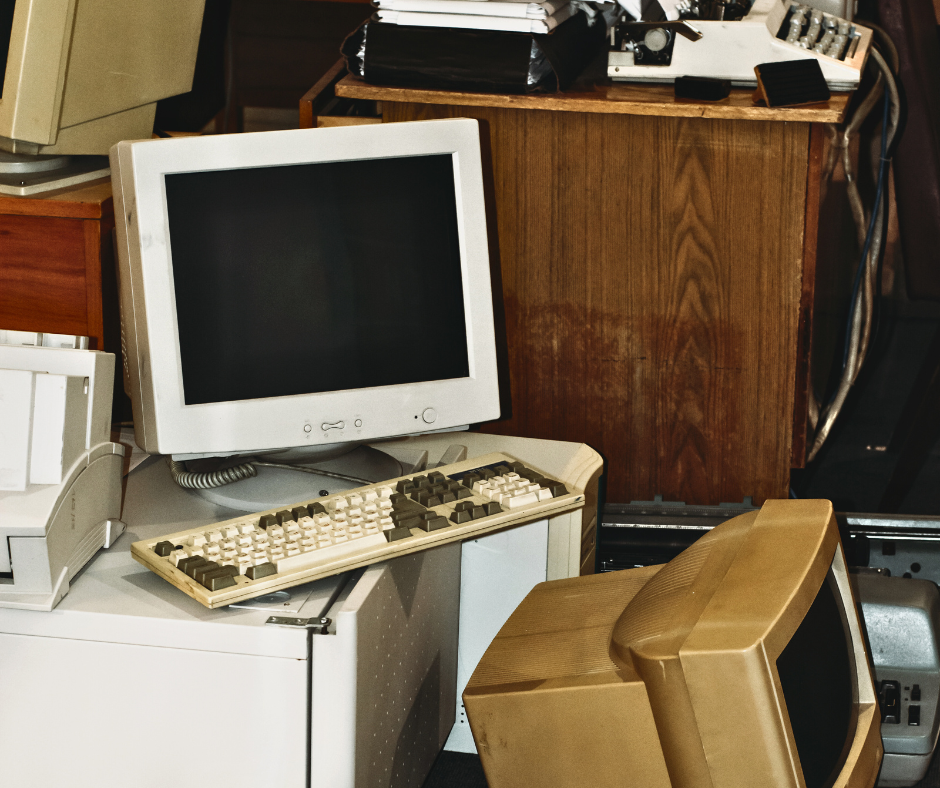

It’s International Caps Lock Day, So Here’s a History of the Keyboard.
Summary
Reflection Questions
Journal Prompt
Today is International Caps Lock Day—a quirky parody holiday that pokes fun at the internet’s love of ALL CAPS. While we celebrate this humorous tradition, let’s pore over an abridged history of the keyboard itself. From its beginnings as a ball with buttons to today’s fully customizable designs, the keyboard has changed alongside our communication habits. Please turn off that Caps Lock (unless you’re feeling REALLY EXCITED) and join us as we explore the evolution of this essential tool.
What on Earth is International Caps Lock Day?


International Caps Lock Day was created as a parody holiday to poke fun at the overuse of the Caps Lock key, particularly in internet communications where typing in all capital letters is often seen as shouting or expressing intense emotion.
Named for the infamous computer key, this day is a humorous reminder of proper netiquette and the importance of balanced typing habits. (Please use lowercase letters when appropriate!) Originally conceived in 2000 by Derek Arnold, it has since become a lighthearted tradition observed by many to celebrate the quirks of keyboard usage, examine workplace culture, and highlight generational divides.
Where Did the Caps Lock Key Come From?


The Caps Lock button—originally labeled the “Shift Lock” key—was introduced on early typewriters in the late 19th century. It mechanically locked the shift mechanism in place—allowing typists to type capital letters without holding down the Shift key continuously. Even back in the 19th century, no one wanted the finger muscle pain that comes with holding down that upper case key.
With the advent of electric typewriters and eventually computer keyboards, these keys evolved into what we now know Caps Locks. Since then, it has become a standard feature on computer keyboards. Caps lock has altered the typing style of writers, programmers, and other professionals (mostly for the better).
Now, let’s take a look at the history of keyboards beyond caps locking.
An Abridged History of the Keyboard in Honor of International Caps Lock Day
Early Typewriters (1860s-1870s)


We can trace the first typewriters back to the mid-19th century when inventors like John Pratt, Peter Mitterhofer, Christopher Latham Sholes, and Carlos Glidden developed early prototypes. The latter two developed the Sholes and Glidden typewriter, which was introduced in 1868. This was one of the first commercially successful models and was exhaustively marketed by Remington.


Invented a few years prior by Danish pastor and educator Rasmus Malling-Hansen in 1865, the Hansen Writing Ball was a predecessor of the keyboard. It featured a distinctive spherical shape with keys arranged in a circular pattern, which allowed for faster and more efficient typing compared to other early typewriters.
While the Sholes and Glidden typewriter was immensely popular, the Writing Ball was actually the first typewriter to be commercially produced and sold. Its innovative design included an electro-magnetically operated escapement mechanism, making it one of the most advanced and influential typewriters of its time.
The QWERTY layout came later. Patented by Sholes in 1878, it was specifically designed to minimize mechanical jamming by spacing out commonly used letter pairings. This layout quickly became the standard for typewriters and remains the default keyboard layout to this day.
Mechanical Typewriters (Late 1800s – 1930s)


During this period, the design and efficiency of typewriters exploded. Companies like Remington dominated the market and typewriters became indispensable tools in offices and homes.


As outlined above, the introduction of the Shift Lock key was significant because it allowed typists to type capital letters without continuously holding the Shift key. This development was an early precursor to the modern Caps Lock key, which facilitated more efficient and less physically demanding typing.
Electric Typewriters (1930s – 1970s)


The 1930s ushered in the electric typewriter, with IBM playing a major role in its development. These machines offered smoother and faster typing experiences—thereby reducing the physical effort required to press keys.
The introduction of IBM’s Selectric typewriter in 1961 was a major milestone. It featured a revolutionary “golf ball” typing element that allowed for interchangeable fonts and improved reliability. This set a new standard for typewriters in terms of functionality and versatility.
Fuel your creative fire & be a part of a supportive community that values how you love to live.
subscribe to our newsletter
*please check your Spam folder for the latest DesignDash Magazine issue immediately after subscription


Early Computer Keyboards (1960s – 1980s)
As computers emerged in the 1960s, typewriters began to be adapted for use as input devices for these new machines. Early computer keyboards were often just repurposed typewriters with slight modifications.
The development of the ASCII standard in 1963 was a significant step towards standardization. It helped establish a common layout that included the familiar QWERTY keys along with additional function keys. These added function keys were essential for interacting with computer systems.
Personal Computer Keyboards (1980s – Present)


The introduction of the IBM Model M keyboard in 1984 was a game-changer for personal computer keyboards. An instant hit because of its tactile feel and durability, the Model M’s design influenced many future keyboards.
Over time, keyboard layouts evolved to include more keys like function keys, arrow keys, and numeric keypads. These new layouts provided users with greater functionality and improved the overall computing experience.
Ergonomic and Specialized Keyboards (1990s – Present)


To address repetitive strain injuries, several companies released ergonomic keyboards with split designs and angled keys in the 1990s. Widely available wireless technology led to the development of Bluetooth and RF keyboards, both of which promised greater flexibility and mobility. Of course, the advent of smartphones and tablets popularized virtual keyboards on touchscreens—which completely upended the way people interact with digital devices.
Today’s Keyboard


In recent years, mechanical keyboards have seen a resurgence in popularity—particularly among gamers and writers. Today’s keyboards are most common, however, as they can be customized with programmable keys, bespoke keycaps, and RGB lighting. These upgrades allow users to tailor their keyboards to their specific needs and preferences.
Other Fun Parody Holidays to Observe in 2024
Add a bit of quirkiness to your calendar with a few more fun parody holidays. Talk Like a Pirate Day on September 19th encourages you to embrace your inner pirate with hearty “Arrrs!” and “Ahoy mateys!” National Sneak Some Zucchini Onto Your Neighbor’s Porch Day on August 8th is a playful way for gardeners to share their bountiful harvests by leaving zucchini anonymously. Don’t forget about Festivus on December 23rd! Inspired by “Seinfeld,” Festivus brings a humorous twist to holiday traditions with the “Airing of Grievances” and “Feats of Strength.” These lighthearted holidays allow us to let go and be goofy when the world feels heavy.








